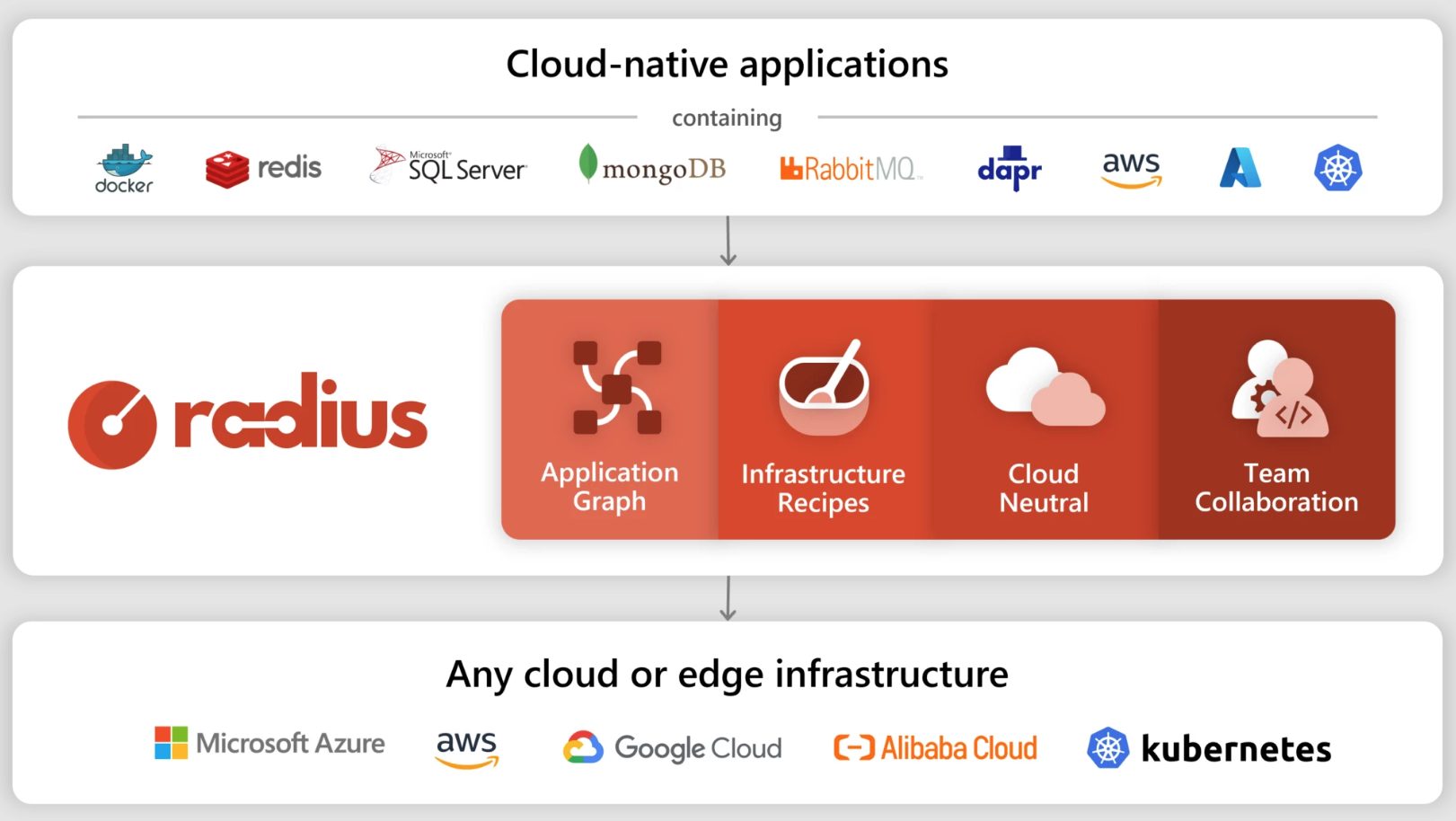The advent of cloud computing has put before the eyes of developers, professionals, companies and end users, scenarios never seen before. The progress made at the cloud infrastructure level has made it possible to develop advanced applications, which in turn are based on microservizi flexible, scalable and portable.
On the other hand, however, developers have gradually recorded a growing complexity in the infrastructure management and lack of visibility into the resources that make up their applications. Significant obstacles that put a brake on productivity.
For operators, the lack of standardization and automation in the process application distribution can result in loss of control over the infrastructure and lead to some loss of trust in the distributed applications.
What is Radius, the open platform for collaborating on application development and deployment in-cloud
To meet the challenges of today and tomorrow, Microsoft has presented Radiusan open source platform that offers built-in support for some of the tools app development more popular ones like Dapr and IaC languages (Infrastructure as Code) come Terraform e Bicep.
The Redmond company notes that modern applications are much more than just lists of resources to use. Radius therefore wants to meet developers and operators where they are today by adapting to existing development activities and CI/CD pipelines (Continuous Integration/Continuous Deployment), set of practices and tools that allow developers to automate the process of integrating, testing, and deploying the programming code.
Radius helps developers better understand and take care of all the components that make up their applications platform configurations such as permissions, connection strings and more to simplify your daily task. Operators can in turn ensure that all applications are distributed accordingly with organizational policies, then use Radius to manage each application and its resources.
How the platform works
The following image makes it much clearer what is Radius and how does it work. The platform, designed by the team Microsoft Azure Incubationsallows developers and engineers to collaborate in deploying and managing applications cloud-nativeadhering to best pratice more effective.
As seen in the diagram below, Radius supports the deployment of applications across different cloud environments, including private clouds, Microsoft Azure e Amazon Web Services (AWS). His architecture is meant to be multi-cloud right from the design phase. Furthermore, it integrates with established technologies such as Kubernetes, widely used to orchestrate containers and manage distributed applications. It also supports, as mentioned above, existing infrastructure tools such as Terraform e Bicep.
The new Microsoft software provides a valuable aid to fully understand the operation of applications, going beyond the functionality provided by Kubernetes. Allows developers to view all components of each application and automatically takes care of connections when new components are added to the project.
Radius also takes care of ensuring that the cloud infrastructure used by applications complies requirements cost, operational and safety. These requirements are defined through “recipes” created by IT operators, platform engineers and security engineers. The system ties an application to its related infrastructure, allowing for clear visualization of interconnections between application and infrastructure.
The application fields
One of the key features of Radius is its ability to provide a consistent experience with different platformsbe it different cloud providers or infrastructures on-premises. This means that applications defined and managed with Radius can be deployed and run on any cloud using the same toolsguaranteeing consistency in development workflows.
A concrete example: an application that uses a database Mongo can be developed and tested locally with a Mongo container. When it’s time to move to production, using Radius developers can easily change application resources, for example connecting to services like Azure CosmosDB o AWS DocumentDBwithout changing the code.
The collaboration between developers and operators is simplified thanks to the “recipes” of Radius: they allow you to configure code templates for infrastructure (such as Terraform modules and Bicep files). Templates can be used by developers for deployment self-service of resources, reducing the need for manual steps that slow down development.
Recipes also allow operators to define and enforce company policies, such as cloud resource configuration and deployment permissions. Programmers can thus focus on the application code without worrying about the details of the underlying infrastructure.
More information on the Radius project can be found in the note published by the Microsoft team and in the article Enabling developer collaboration with Radius.


